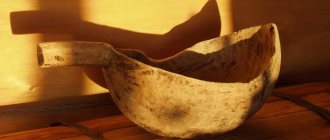To supply water to a bathhouse, a country house, or a private house from a well or well, a pumping station is required, which, in addition to the pump itself, includes sensors, controllers, a storage tank and other elements. Let's take a closer look at how it is designed, how it works and how to choose a pumping station for a private home, cottage or bathhouse.
[toc]
A pumping station is all the equipment for providing a home with water, assembled. Its advantage is that it can maintain constant pressure in the system regardless of flow rate.
Pumping station design
How to heat water in a bath
There are several ways to heat water in a bathhouse, each of which has its own advantages and disadvantages. Most often, the choice of heater depends on specific conditions, the need for a particular amount of hot water, the volume of the bath room and financial costs.
Hot water can be obtained as follows:
- heat from a brick or metal stove;
- heat with an electric heater;
- heat with a gas heater;
- use a wood heater.
All of the above methods for heating water are very effective, but for their implementation a necessary condition is the mandatory centralized supply of running water and the presence of a water supply system.
Electric water heater for a bath
Electric heaters are either storage or flow-through. The use of both types of devices in a bathhouse is acceptable and justified. However, user reviews about them are directly opposite - some believe that it is easier to heat water with a flow-through heater, while others prefer storage heaters for this purpose.
Storage boilers have quite impressive sizes, especially when it comes to devices with a volume of 100 liters or more. Therefore, for small baths, this is not the most reasonable method of heating water. There is another important problem with a storage water heater. In winter, when the bathhouse is heated only periodically, the water in the boiler and the entire system may freeze.
This problem can be solved in three ways:
- Heat water in a bathhouse using a storage boiler model with constant maintenance of a minimum temperature. However, there are also disadvantages here - unwanted excess consumption of electricity and the risk of sudden shutdown.
- Drain hot water from the storage tank and the entire system after each use. The measure is quite labor-intensive, but in winter, in order to avoid freezing of the water system, it is completely justified.
- Use storage heaters only in heated rooms or solve the heating problem by all possible means.
Flow-through heaters heat water quickly and are compact in size. Powerful models supply hot water at high temperatures and such devices are good for areas with developed, stable power transmission. In summer cottages, network power is usually limited to 5 kW, so it is necessary to use low- and medium-power electrical appliances.
For the productive operation of instantaneous water heaters, water pressure (pressure) is of considerable importance. All models of flow-through heaters are designed for a certain amount of Pa (this is specified in the passport for the electrical device).
There are small difficulties in using flow-through devices that need to be taken into account when installing the equipment. In winter, the liquid supplied to the boiler is very cold and often it simply does not have time to heat the water to the optimal temperature. This problem can be resolved by installing shut-off valves before and after the water enters and exits the heater. With the help of such regulation, sufficient pressure is created in the heater, and the automation of the device helps resolve the issue with the heating temperature of hot water.
Which heating method should I choose?
The choice of water heating method is made based on the needs of users and the technical capabilities of the bathhouse owner. If system assembly occurs during initial construction, it is best to choose a furnace-heated option. It is more economical and efficient, and if necessary, nothing will prevent you from installing an additional heater.
Using a heat exchanger allows you to reduce the power of the furnace and get the most out of it. This is highly appreciated by all bathhouse owners, but as the size of the premises and the number of users increases, the efficiency of the heat exchanger decreases. The indirect heat transfer method has limited efficiency and is not suitable for large rooms with high needs.
Gas water heaters are practical and do not require too high monthly expenses. They allow you to heat water not only if you need full-fledged bath procedures, but also for regular showering. In addition, a gas water heater can significantly relieve the furnace and reduce fuel consumption.
Harvesting firewood is not the easiest procedure, therefore, the ability to reduce the intensity of kindling is considered a big plus.
If a centralized gas supply is not available, and you don’t want to bother with periodically replacing cylinders for the heater (this is also dangerous), it is better to pay attention to electric heaters. For a small bathhouse that is used only occasionally, this can be a completely practical and not too wasteful option.
How to heat water in a bathhouse from a stove
You can organize heating of water in a bathhouse with a brick stove using a cast-iron stove above it. The hot water tank is installed directly on the stove itself, it can be round or square, with water supplied to fill the tank from the incoming water pipe and hot water drawn through the tap.
You can heat water without connecting water pipes to it. In this case, for each heating of the steam room, reserves of cold water should be made in the dressing room, and the water tank should be filled manually before lighting the stove.
This method of heating water is quite simple, but it has significant disadvantages:
- labor intensity of preparation;
- increased humidity from boiling during prolonged heating;
- risk of getting burned on the heated walls of the oven and tank.
You can heat water from the stove in different ways. This depends on the type of stove itself, the presence of water pipes connected to the bathhouse, the financial capabilities of the owner and his desire to make certain efforts.
Heating water in a bathhouse through a heat exchanger
The best option for heating water in a bathhouse is the heating method using a heat exchanger. There are several ways to make a structure for heating through a heat exchanger.
In a brick oven, the heat exchanger can be a multi-section cast iron battery or a register welded from a thick-walled steel pipe. The heat exchanger is mounted in a special furnace cavity with separate inlet and outlet valves. When the stove heats up, the water in the exchanger becomes hot and is dispensed through the water tap as needed.
In the case of a metal stove, everything is much simpler. In order to heat water with such a furnace, several types of heat exchangers are used:
- external heat exchanger (located in close proximity to the firebox or above it);
- internal heat exchanger (located in the firebox itself);
- heat exchanger on the flue pipe (located on the chimney pipe above the tank with stones).
Shower stall and drain
There are many options for a shower stall: from the simplest pipe built into the walls, along which a waterproof curtain “rides” on rings, to a super-modern (or not super) shower stall. From experience we can say that if a cabin is installed in a bathhouse, then it is the most primitive one - walls, a door and a tray, and in principle nothing more is needed. This is an option for those who do not want to bother with waterproofing adjacent walls and like quick solutions.
Bath shower with titanium
In general, if the layout does not provide for a separate small room for the shower, you can fence off part of the washing compartment where the drainage system should be organized. If there is no drain, you will have to arrange one.
If you plan to install a pan, it requires a separate concrete base with a connected drain pipe. The base is needed so that the plastic of the tray does not “walk” under the weight of a person, since most bath showers contain plastic products - they are inexpensive and, if installed correctly, are quite durable, and the plastic bends under the weight of even a not very large person.
If a tray is not provided and the floor is wooden, you need to protect it from water. To do this, galvanized metal is laid in the area where the shower stall will be installed, and the joints of the sheets are carefully sealed with silicone sealant (for example, Ceresit CS 25). Screed reinforcement is laid on the metal with a slope towards the drain, everything is filled with cement mortar. Floor tiles are laid on the fresh mortar (while maintaining the slope), and its joints are also well coated with silicone. Instead of galvanized metal, you can use modern films for waterproofing. In this case they must be reinforced.
Shower drain
If the walls in the shower stall are wooden, they need protection from water. You can protect them with ceramic tiles, plastic panels, or simply lay sheets of plastic of a suitable size, sealing the joints with the same silicone. Under any type of finish, it is also advisable to lay a layer of waterproofing. In the simplest case, it is a plastic film that is attached to the walls using staples from a construction stapler or strips and nails, and it is advisable to seal the resulting holes with reinforced tape.
Do-it-yourself hot water in a bathhouse: diagrams
Heating water in a bathhouse is not much of a hassle. However, in order for everything to function well and there is enough hot water, you need to adhere to the correct organization of the heating and water supply system.
The diagram of the water supply to the bathhouse through a heat exchanger with cold and hot water tanks on the roof of the bathhouse is placed below.
The scheme for heating water in a bathhouse is a water tank on a pipe plus a remote tank, as well as a “samovar” type water tank.
Diagram of a homemade wood-burning water heater.
Scheme of organizing hot and cold water in a bathhouse with a metal boiler and heat exchanger.
Diagram of a hot water supply system in a bathhouse with a “register” heat exchanger and a remote tank.
Types of bath water supply
If the bathhouse is used quite rarely, and you enjoy hauling water into it in buckets, you are unlikely to be interested in how to make a water supply for a bathhouse. However, I would like to draw your attention to the fact that this method is not only labor-intensive, but also very impractical and uneconomical.
It will take a lot of time and effort to carry water in buckets.
In summer, the water remaining in the container stagnates and loses its freshness. And in winter it must be completely drained after each procedure, otherwise the frozen liquid will rupture the tank and shut-off valves.
Even if water costs nothing (river, rain, etc.), its drained excess creates problems: increased humidity, mold, overflow of the drain pit. And an automated water supply system will allow you not to think about such phenomena and not waste time and effort preparing the bath for the bath day.
Fungus and mold are the result of excess moisture
Summer water supply
If you visit the bathhouse only during summer visits to the dacha, you can connect the seasonal water supply to the bathhouse. To do this, you need to lower a submersible pump into the water source and lay a pipeline from it to the bathhouse. You can use a regular garden hose.
Advice. When laying “over the air”, without digging into the ground, it is more practical to use thick-walled polyethylene pipes. They will last more than one season and will not create problems when preserving the pipeline for the winter.
By turning on the pump, you will quickly fill all the containers in the bath and can add more if there is not enough water.
You can pump water into a storage tank located in the attic or on a hill on the site. From there it will be fed into the bathhouse by gravity. In this case, it is convenient to install the faucet directly in the washing room.
Making such a water supply in a bathhouse with your own hands is as easy as shelling pears, but it doesn’t provide much comfort either. In addition, the system needs to be preserved for the winter: drain the water from it so that when it freezes, it does not rupture the pipes and shut-off valves.
However, in some cases it is the only possible one. For example, if a house is still being built on the site and it is planned to build a general water supply system from a centralized source.
Or the now popular bathhouse on wheels - the water supply scheme for a mobile bathhouse involves connecting a flexible hose to different sources.
All-season water supply
Unfortunately, the summer water supply in the bathhouse will not work in winter due to the banal freezing of water in the pipes. Insulating them is not an option, since even the highest quality thermal insulation materials are not able to protect against severe frosts.
To prevent ice plugs from forming in pipes and equipment, you need to:
- Either lay them below the freezing level of the ground and constantly heat the bathhouse;
- Either provide a constant flow of water in the system, which is very irrational;
- Or completely drain the water from it after each visit to the steam room;
- Or maintain a positive temperature of the water inside the pipes using a heating electric cable.
Heating cable on the outer section of the pipe
Each method has its drawbacks. For example, if there are frequent power outages, using a heating cable will be useless. And constantly heating a room that is visited only occasionally will be too expensive.
Therefore, in practice the following schemes are used:
- The simplest one resembles summer water supply for baths, with the difference that the pipeline is laid with a good slope towards a well or borehole. There should be no shut-off devices on it, and the pump should not have a shut-off valve. By turning it on, you can fill all the containers in the bath. After turning off the equipment, the remaining water in the pipe, thanks to the slope, flows by gravity through the pump back into the well.
The simplest design of a winter water supply with flow to the source
It is important. To prevent the water in the source from freezing, it is necessary to insulate it - make a caisson for a well or a house for a well with a well-insulated lid.
- A more complex scheme involves greater material and labor costs for its installation. Such water supply systems for baths consist of a pump and a pipeline laid in a trench below the freezing level of the soil up to the washing room.
- To do this, make a hole in the wall of the well, insert the end of the pipe into it, connect it to the pump, and seal the hole. A trench is dug up to the bathhouse and under its foundation. It is better to make the vertical part of the pipeline from the pit in the bathhouse to the water tank from a flexible hose, and the pit itself is well insulated and equipped with a lid.
- There is another similar scheme in which water pumping equipment is installed not in a well, but in an insulated base of a bathhouse.
Drawing of water supply for a bathhouse from a well
These are the most common methods by which water supply is arranged in an unheated bathhouse. If it is heated all year round, it can be equipped with much greater comfort by installing a pumping station and a boiler for hot water, and completing internal wiring in all rooms.
The presence of heating in the bathhouse will allow you to equip it with maximum comfort.
This will make it possible to make a bathroom in the bathhouse, install a shower and even equip a kitchen. The only weak point of such a system in winter is the area where it enters the building above the freezing level. It must be insulated or a heating cable must be laid in the pipe.
Summary of pumps
Having dealt with all the pumping units, many will have a question about what to choose. Everything will depend on the requirements of the summer resident. If the summer shower is a homemade frame structure, covered with opaque materials, for which there are no special requirements, then the best option is small pumps from the first category. That is, put a bucket of warm water next to the shower, lower the water intake hose into it and use it.
But if the summer shower is a purchased ready-made structure with a water tank and a metal frame covered with polycarbonate, then it is better to organize a full-fledged shower installation with water pumped from an autonomous water supply system. To do this, a plastic pipe is connected to the shower, which is cut into the water supply network. Or they install an outdoor shower near the tap, which is used for watering green spaces. It is connected to the shower water tank with a regular rubberized or polymer hose.
Finished shower stall Source rinnipool.ru
The most important thing is that all known pumping installations operate on the principle of maintaining reservoirs completely filled. That is, when the tank is completely filled with water, the pumps do not work. As soon as you opened the water supply, that is, began to take water procedures, the pump immediately turns on and fills the tank. It turns out that the summer shower is always in full combat readiness.
Today, manufacturers offer heated showers. To do this, heating elements are installed inside the tank, which are powered by electric current. In this case, pumps for showers in the country with a heated tank work in exactly the same way as with tanks without heating.











